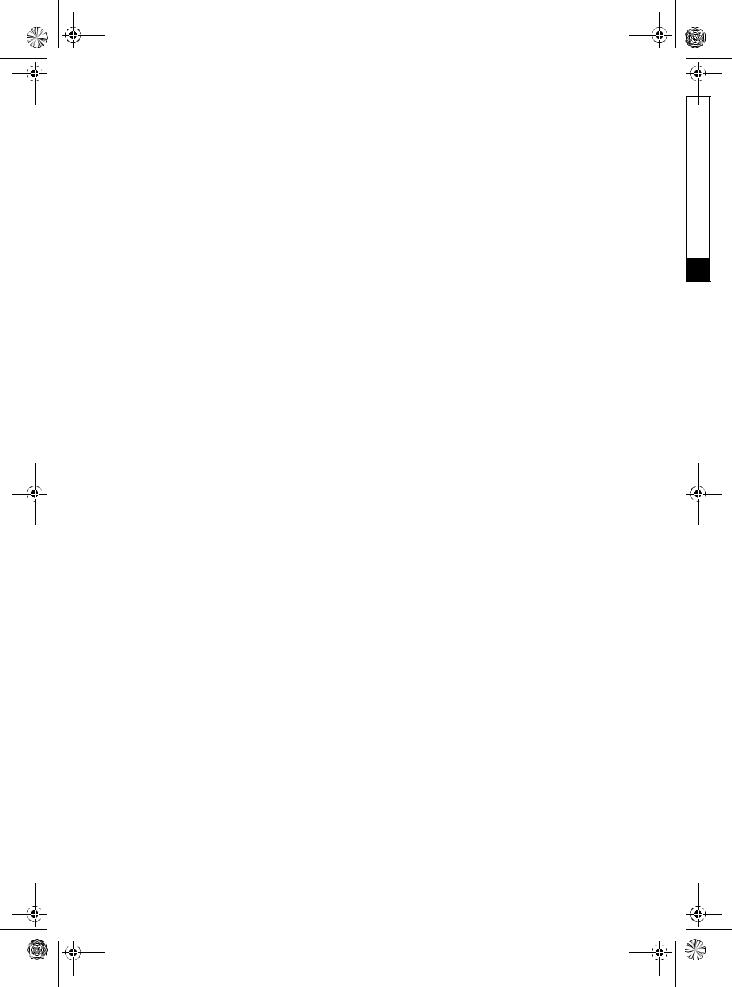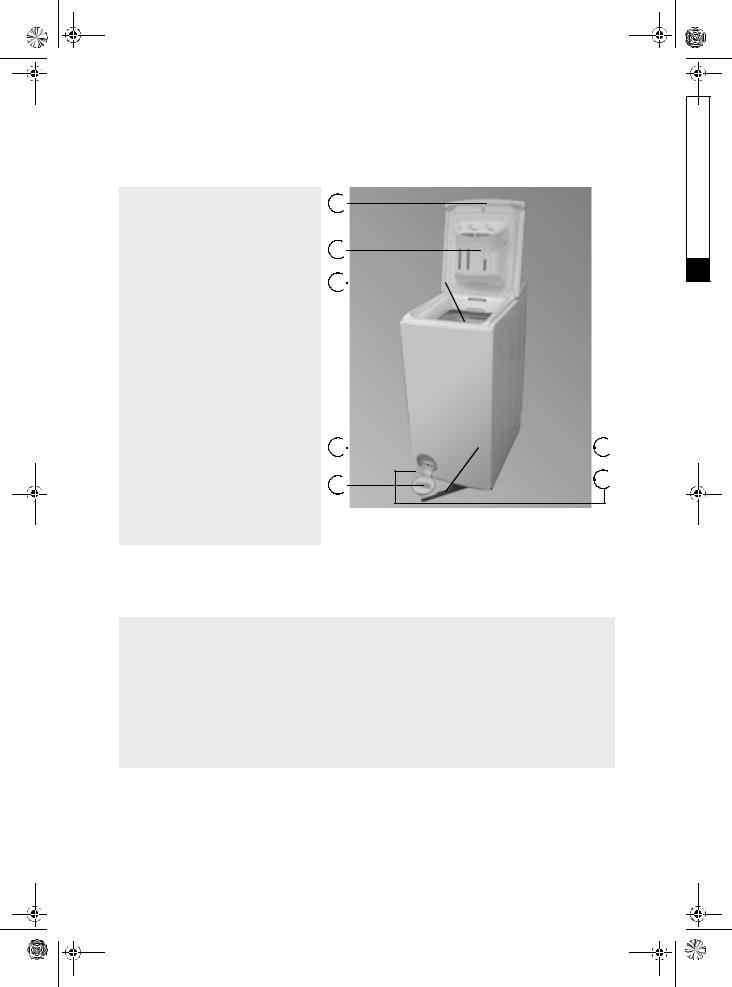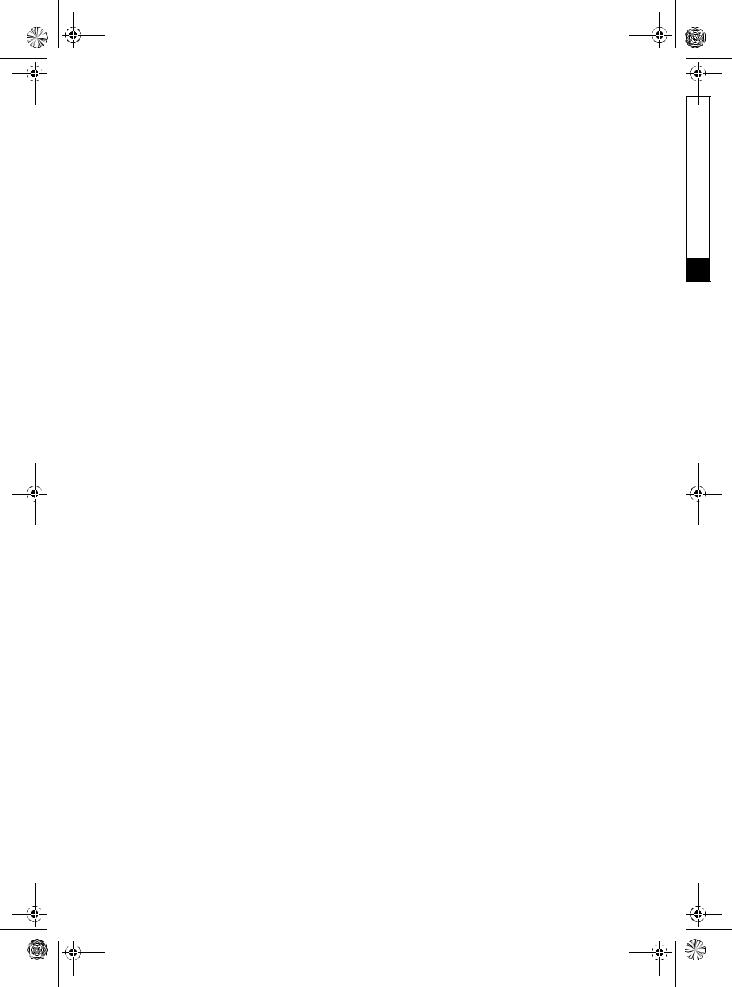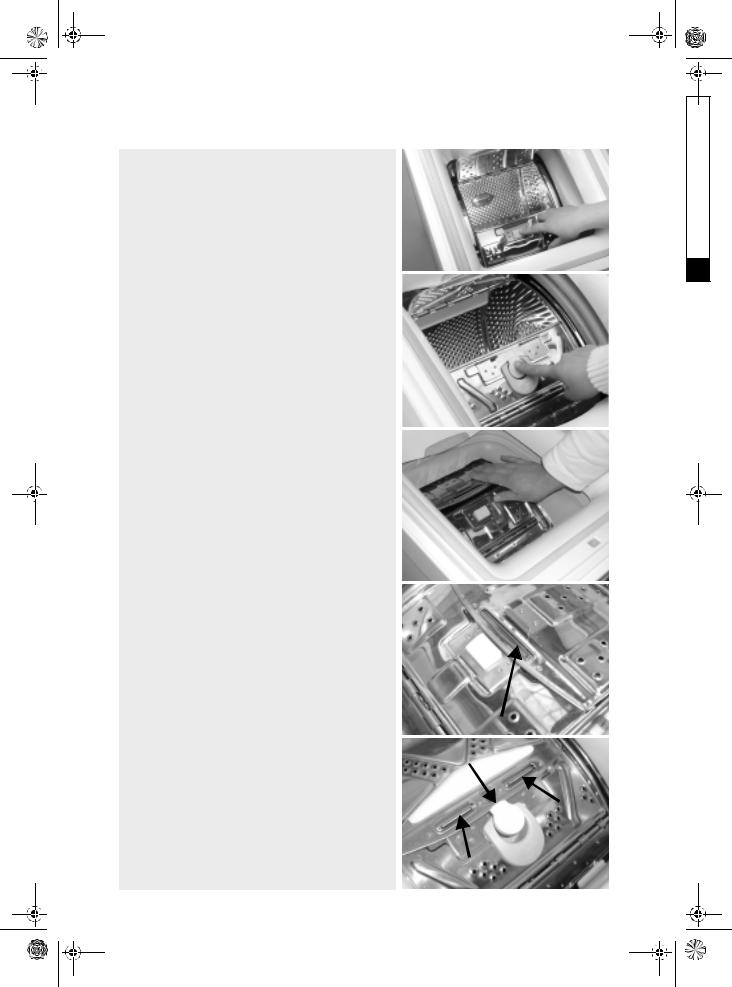Whirlpool AWE 6727 User Manual

IFU-TL HR GB.fm Page 1 Friday, November 7, 2008 2:30 PM
CONTENTS
DEFINITION OF USE
BEFORE USING THE WASHING MACHINE
PRECAUTIONS AND GENERAL
RECOMMENDATIONS
DESCRIPTION OF THE WASHING MACHINE BEFORE THE FIRST WASH CYCLE PREPARATION OF THE WASHING DETERGENTS AND ADDITIVES
CLEANING THE FILTER/
DRAINING RESIDUAL WATER
CARE AND MAINTENANCE
TROUBLESHOOTING GUIDE
AFTER-SALES SERVICE
TRANSPORT AND HANDLING
INSTALLATION
ELECTRICAL CONNECTION
Black process 45.0° 100.0 LPI

IFU-TL HR GB.fm Page 2 Friday, November 7, 2008 2:30 PM
DEFINITION OF USE
This washing machine is exclusively destined to wash machine washable laundry in quantities which are usual for private households.
•Observe the instructions given in these Instructions for Use and the Programme Chart when using the washing machine.
•Keep these Instructions for Use and the Programme Chart; if you pass on the washing machine to another person, also give him/her Instructions for Use and Programme Chart.
BEFORE USING THE WASHING MACHINE
1.Remove the packaging and check a. Cut and remove the shrink-wrap.
b. Remove the top protection and the protective corners.
c. Remove the bottom protection by tilting and turning the washing machine on one rear bottom corner. Make sure that the black plastic part of the bottom protection (if available on the model) remains in the packing and not in the machine bottom.
This is important, as otherwise the plastic part could damage the washing machine during operation.
d. Open the lid by pressing it slightly down while raising the handle. Remove the polystyrene cushion (depending on model).
e. Remove the blue protective film from the panel (depending on model).
• After unpacking, make sure that the washing machine is undamaged. If in doubt, do not use the washing machine. Contact After-Sales Service or your local retailer.
• Keep the packaging materials (plastic bags, polystyrene parts, etc.) out of reach of children; they are potentially dangerous.
• If the appliance was exposed to the cold prior to delivery, keep it at room temperature for a few hours before operating.
2.Remove the transport bracket
•The washing machine is fitted with transport screws and a transport bracket to prevent damage during transport. Before using the washing machine you must remove the transport bracket (see “Installation”/“Removal of transport bracket”).
3. Install the washing machine
•Place the washing machine on a flat and stable floor surface.
•Adjust the feet to ensure that the machine is stable and level (see “Installation”/“Adjust the feet”).
•In case of wooden or so-called “floating floors” (for instance certain parquet or laminate floors), place the appliance on a 40 x 60 cm sheet of plywood at least 3 cm in thickness which is secured to the floor.
•Make sure that the ventilation openings in the base of your washing machine (if available on your model)
are not obstructed by a carpet or other material.
4. Water supply
•Connect the water supply inlet hose in accordance with the regulations of your local water company
(see “Installation”/“Connect the water inlet hose”).
• Water supply: |
Cold water only |
• Tap: |
3/4” threaded hose connection |
• Pressure: |
100-1000 kPa (1-10 bar). |
•Only use new hoses for connecting the washing machine to the water supply. Used hoses must not be used anymore and should be discarded.
5. Drain hose
•Connect the drain hose to the siphon or hook it over the edge of a sink with the “U” bend (see “Installation”/“Connect the water drain hose”).
•If the washing machine is connected to a built-in drainage system, ensure the latter is equipped with a vent to avoid simultaneous loading and draining of water (siphoning effect).
6. Electrical connection
•Electrical connections must be carried out by a qualified technician in compliance with the manufacturer’s instructions and the current standard safety regulations.
•The technical data (voltage, power and fuses) are given on the rating plate on the rear of the washing machine.
•The washing machine must be connected exclusively by means of a socket with an earth connection in accordance with current regulations. The washing machine must be earthed by law. The manufacturer declines all liability for injury to persons or animals or damage to property deriving directly or indirectly from failure to observe the directions.
•Do not use extension leads or multi sockets.
•Before any maintenance on the washing machine disconnect it from the mains supply.
•Access to the mains plug or to disconnection from the mains supply via a double-pole switch must be ensured at all times following the installation.
•Do not operate the washing machine if it has been damaged during transport. Inform the After-Sales Service.
•Mains cable replacement is only to be carried out by After-Sales Service.
•The washing machine must be connected to an effective earthing installation, in compliance with the regulations in force. In particular, washing machines installed in premises containing a shower or a bath must be protected by a differential residual current device of at least 30 mA. Earthing the washing machine is obligatory under the law. The manufacturer declines all liability for injury to persons or animals or damage to property deriving either directly or indirectly from failure to observe the directions in these Instructions for Use.
•The washing machine may only be used in the household for the prescribed uses.
Dimensions:
Width:
Height:
Depth:
GB 2
Black process 45.0° 100.0 LPI

IFU-TL HR GB.fm Page 3 Friday, November 7, 2008 2:30 PM
PRECAUTIONS AND GENERAL RECOMMENDATIONS
1.Safety instructions
•The washing machine is appropriate for indoor use only.
•Do not store flammable fluids near the appliance.
•Do not place electrical appliances on the lid of your washing machine.
•Children must be supervised to ensure that they do not play with the appliance.
•This appliance is not intended for use by persons (including children) with reduced physical, sensory or mental capabilities, or lack of experience and knowledge, unless they have been given supervision or instruction concerning use of the appliance by a person responsible for their safety.
•Do not attempt to force the lid open.
•If necessary, the power cable may be replaced with an identical one obtained from our AfterSales Service. The power cable must only be replaced by a qualified technician.
2.Packing
•The packaging materials are 100% recyclable and
bear the recycling symbol  Adhere to local regulations when disposing of packaging material.
Adhere to local regulations when disposing of packaging material.
3.Disposing of packaging and old washing machines
•This appliance is marked according to the European directive 2002/96/EC on Waste Electrical and Electronic Equipment (WEEE). By ensuring this product is disposed of correctly, you will help prevent potential negative consequences for the environment and human health, which could otherwise be caused by
inappropriate waste handling of this product. The symbol  on the product, or on the documents accompanying the product, indicates that this appliance may not be treated as household waste. Instead it shall be handed over to the applicable collection point for the recycling of electrical and electronic equipment.
on the product, or on the documents accompanying the product, indicates that this appliance may not be treated as household waste. Instead it shall be handed over to the applicable collection point for the recycling of electrical and electronic equipment.
Disposal must be carried out in accordance with local environmental regulations for waste disposal. For more detailed information about treatment, recovery and recycling of this product, please contact your local city office, your household waste disposal service or the shop where you purchased the product.
•The washing machine is built from reusable materials. It must be disposed of in compliance with current local waste disposal regulations.
•Before scrapping, cut off the power cable so that the washing machine cannot be connected to the mains.
•Remove detergent from compartment if you intend scrapping your washing machine.
4.Energy saving tips
•Achieve the best use of energy, water, detergent and time by using the recommended maximum load size.
•Do not exceed the detergent dosages indicated in the manufacturer’s instructions.
•The Eco Ball - a special system in the outlet - will prevent detergent loss from the drum to avoid detergent loss into the environment.
•Use “Prewash” (if available on your model) for heavily soiled laundry only! Save detergent, time, water and energy consumption by not selecting “Prewash” for slightly to normally soiled laundry.
•Pretreat stains with stain remover or soak dried in stains in water before washing to reduce the necessity of a hot wash program.
•Save energy by using a 60° C instead of a 95° C wash programme or a 40° C instead of a 60° C wash programme.
•Save energy and time by selecting a high spin speed to reduce the water content in laundry before using a tumble dryer (for machines with adjustable spin speed).
5.General recommendations
•Do not leave the washing machine connected when not in use. Turn off the tap.
•Before cleaning or carrying out maintenance switch off the washing machine and disconnect it from the mains supply.
6.EC Declaration of Conformity
•This washing machine has been designed, constructed and distributed in compliance with the safety requirements of EC Directives: 2006/95/EC Low Voltage Directive 2004/108/EC Electromagnetic Compatibility Directive
GB 3
Black process 45.0° 100.0 LPI

IFU-TL HR GB.fm Page 4 Friday, November 7, 2008 2:30 PM
DESCRIPTION OF THE WASHING MACHINE
1.Lid
2.Detergent dispenser
3.Drum
4.Pump access behind filter
5.After-Sales Service sticker (behind the filter cover)
6.Mobility lever (depending on model)
• To move the washing machine: pull the handle out a little bit by hand and pull it out to the stop with the foot.
7.Adjustable feet
1
2
3
4

5
 6
6
 7
7
BEFORE THE FIRST WASH CYCLE
To remove any residual water used in testing by the manufacturer, we recommend that you carry out a short wash cycle without laundry.
1.Open the tap.
2.Close the drum flaps.
3.Pour a small amount of detergent (about 30 ml) into the main wash chamber  of the detergent dispenser.
of the detergent dispenser.
4.Close the lid.
5.Select and start a short programme (see separate programme chart).
GB 4
Black process 45.0° 100.0 LPI

IFU-TL HR GB.fm Page 5 Friday, November 7, 2008 2:30 PM
PREPARATION OF THE WASHING
Sort the laundry
1. Sort the laundry according to…
•Type of fabric / care label symbol
Cottons, mixed fibres, easy care/synthetics, wool, handwash items.
•Colour
Separate whites and coloureds. Wash new coloured items separately.
•Size
Wash items of different sizes in the same load to improve washing efficiency and distribution in the drum.
•Fabric delicacy
Wash delicate articles separately: use a special
programme for Pure New Wool  , curtains and other delicates. Always remove curtain glides
, curtains and other delicates. Always remove curtain glides
or wash curtains with the glides inside a cotton bag. Use the special programme for handwash fabrics. Wash stockings, belts and other small items or articles with hooks (e.g. bras) in special cotton bags for washing machines or in zipped pillow cases.
2.Empty pockets
Coins, safety pins and similar items can damage your laundry as well as the washing machine’s drum and tub.
3.Fasteners
Close zips and fasten buttons or hooks; loose belts or ribbons should be tied together.
Stain removal
•Blood, milk, egg and other organic substances are generally removed by the enzyme phase of the programme.
•To remove red wine, coffee, tea, grass and fruit stains etc. add a stain remover to the main wash chamber  of the detergent dispenser.
of the detergent dispenser.
•Particularly stubborn stains should be treated before the wash.
Dyeing and bleaching
•Only use dyes and bleaches that are suitable for washing machines.
•Follow the manufacturer’s instructions.
•Plastic and rubber parts of the machine may be stained by dyes or bleaches.
GB 5
Black process 45.0° 100.0 LPI

IFU-TL HR GB.fm Page 6 Friday, November 7, 2008 2:30 PM
Loading the laundry
1.Open the machine lid by pulling it upwards.
2.Open the drum by pushing the drum flap release (pictures “1a” or “1b” - depending on the model; models as shown on “1a” have a fixed drum flap release which will not compress when pushed).
3.Place the items of laundry into the drum one by one. Do not exceed the maximum load of the programmes indicated in the separate programme chart.
Notes:
-Overloading the machine will result in unsatisfactory washing results and creased laundry.
-Take care that the laundry does not overhang the drum; if this is the case, push the laundry down into the drum so that there is enough free space to close the drum flaps properly.
-Do not use the flaps to push the laundry into the drum.
4.To close the drum, hold both doors in the middle again (picture “2”).
ATTENTION: make sure that the drum flaps are properly locked - depending on the model:
-the metal hook must be completely hooked into the rear door flap - see picture “2a”, or
-all metal hooks must be properly hooked inside the rear door flap, and the button must overlap the edge of the rear door flap - see picture “2b”.
-check that no laundry gets stuck between the flaps, or between flaps and drum.
GB 6
1a
1b
2
2a
Black process 45.0° 100.0 LPI
